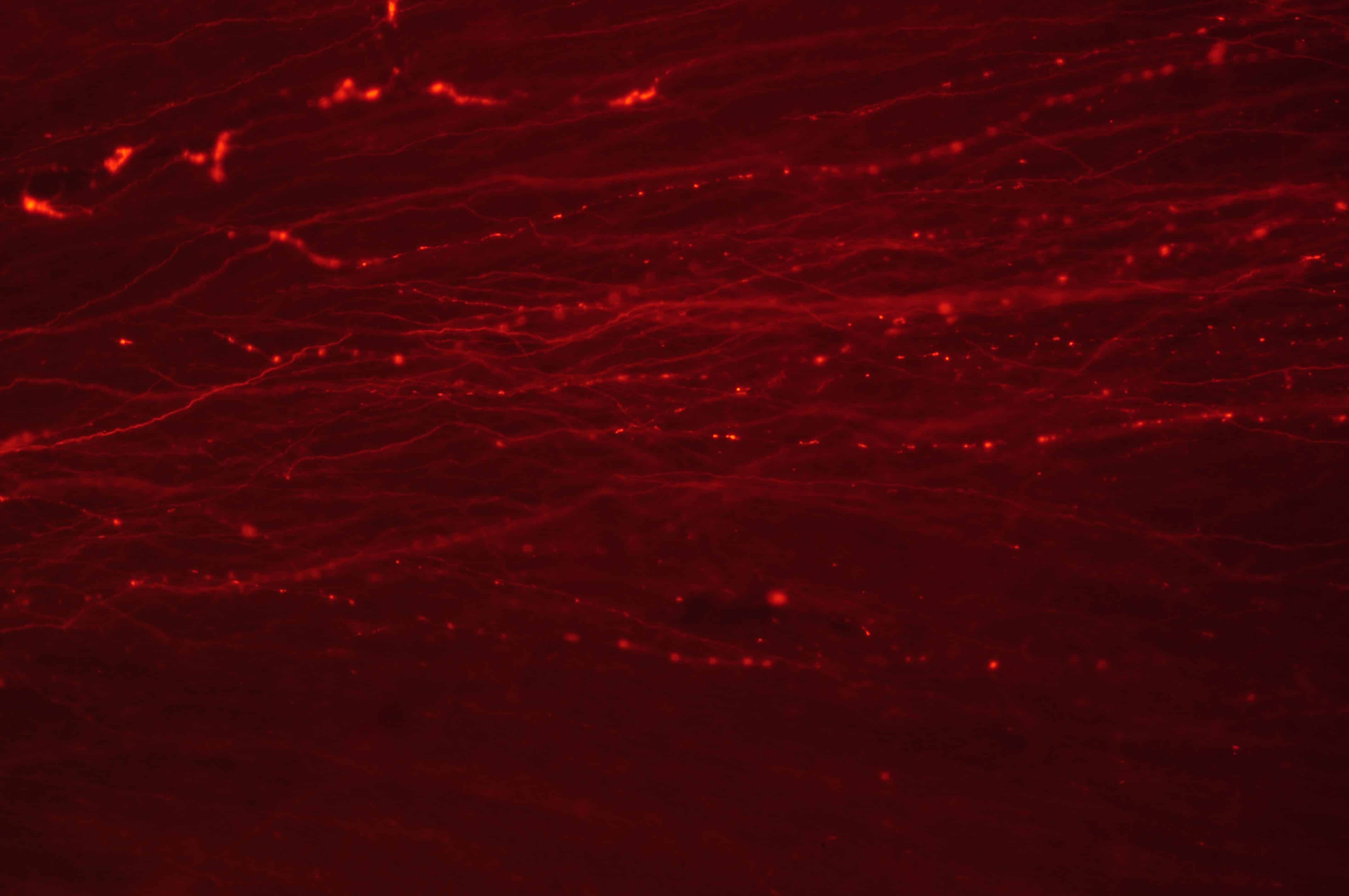One family of proteins that plants use to combat fungal infections could have an unexpected use: repairing axons — the long thread-like parts of a nerve cell.

Image credits Minyoung Choi / Wikipedia.
Axons are the large projections that neurons use to ferry signals to other parts of the body. They’re the main component of white matter, and without them, the nervous communication in the body would grind to a halt. Axonal damage can also lead to a host of disabilities associated with conditions such as spinal cord injury or stroke.
Andrew Kaplan, a PhD candidate at the Montreal Neurological Institute and Hospital of McGill University, was trying to find a substance that could help undo the damage for people suffering these conditions as part of Dr. Alyson Fournier’s team, professor of neurology and neurosurgery and senior author on the study. During his research, he found one family of proteins with neuroprotective functions known as 14-3-3 which could hold the key to creating axon-repairing drugs.
This family of proteins takes on a surprising role in plants which are fighting off a certain fungal strain. The fungus releases a marker molecule called fusicoccin-A. When exposed to this molecule, the plants’ leaves will wilt but their roots grow longer. This happens because fusicoccin-A affects 14-3-3’s normal interaction with other proteins, promoting growth.
“While 14-3-3 is the common denominator in this phenomenon, the identity of the other proteins involved and the resulting biological activities differ between plants and animals,” says Kaplan.
Kaplan’s theory was that fusicoccin-A could be used to harness 14-3-3 for use in repairing axons. He and his team placed mechanically damaged neurons in a culture with the substance and waited to see what happened.
“When I looked under the microscope the following day the axons were growing like weeds, an exciting result that led us to determine that fusicoccin-A can stimulate axon repair in the injured nervous system,” says Kaplan.
Beyond brain or spinal chord injuries, axonal damage also plays a central role in other disorders and diseases, such as multiple sclerosis or neurodegenerative conditions. Fusicoccin-A and similar molecules could become the starting point for a new class of drugs to treat and repair this damage. Kaplan says future research should aim to better understand the underlying mechanism by which fusicoccin-a improves axonal repair, which can be used to develop even more powerful medication.
One protein called GCN1 holds particular promise. The team found that GCN1 and 14-3-3 bonding can be an important factor in the fusicoccin-A-induced growth.
“We have identified a novel strategy to promote axon regeneration with a family of small molecules that may be excellent candidates for future drug development,” says Fournier.
“This is an exciting advance because the field has struggled to find treatments and identify targets for drugs that stimulate axon repair.”
The full paper “Small-Molecule Stabilization of 14-3-3 Protein-Protein Interactions Stimulates Axon Regeneration” has been published in the journal Neuron.






